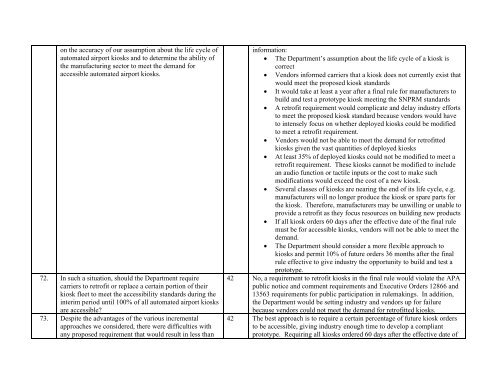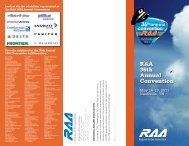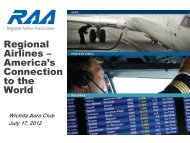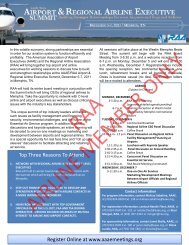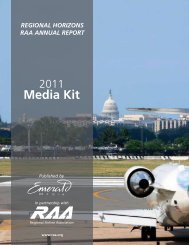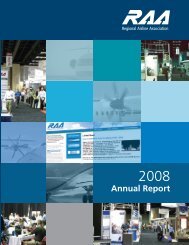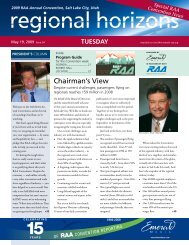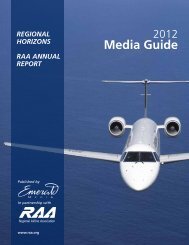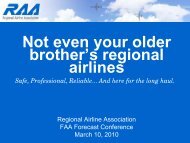Comments - Regional Airline Association
Comments - Regional Airline Association
Comments - Regional Airline Association
You also want an ePaper? Increase the reach of your titles
YUMPU automatically turns print PDFs into web optimized ePapers that Google loves.
on the accuracy of our assumption about the life cycle ofautomated airport kiosks and to determine the ability ofthe manufacturing sector to meet the demand foraccessible automated airport kiosks.72. In such a situation, should the Department requirecarriers to retrofit or replace a certain portion of theirkiosk fleet to meet the accessibility standards during theinterim period until 100% of all automated airport kiosksare accessible?73. Despite the advantages of the various incrementalapproaches we considered, there were difficulties withany proposed requirement that would result in less thaninformation: The Department’s assumption about the life cycle of a kiosk iscorrect Vendors informed carriers that a kiosk does not currently exist thatwould meet the proposed kiosk standards It would take at least a year after a final rule for manufacturers tobuild and test a prototype kiosk meeting the SNPRM standards A retrofit requirement would complicate and delay industry effortsto meet the proposed kiosk standard because vendors would haveto intensely focus on whether deployed kiosks could be modifiedto meet a retrofit requirement. Vendors would not be able to meet the demand for retrofittedkiosks given the vast quantities of deployed kiosks At least 35% of deployed kiosks could not be modified to meet aretrofit requirement. These kiosks cannot be modified to includean audio function or tactile inputs or the cost to make suchmodifications would exceed the cost of a new kiosk. Several classes of kiosks are nearing the end of its life cycle, e.g.manufacturers will no longer produce the kiosk or spare parts forthe kiosk. Therefore, manufacturers may be unwilling or unable toprovide a retrofit as they focus resources on building new products If all kiosk orders 60 days after the effective date of the final rulemust be for accessible kiosks, vendors will not be able to meet thedemand. The Department should consider a more flexible approach tokiosks and permit 10% of future orders 36 months after the finalrule effective to give industry the opportunity to build and test aprototype.42 No, a requirement to retrofit kiosks in the final rule would violate the APApublic notice and comment requirements and Executive Orders 12866 and13563 requirements for public participation in rulemakings. In addition,the Department would be setting industry and vendors up for failurebecause vendors could not meet the demand for retrofitted kiosks.42 The best approach is to require a certain percentage of future kiosk ordersto be accessible, giving industry enough time to develop a compliantprototype. Requiring all kiosks ordered 60 days after the effective date of


